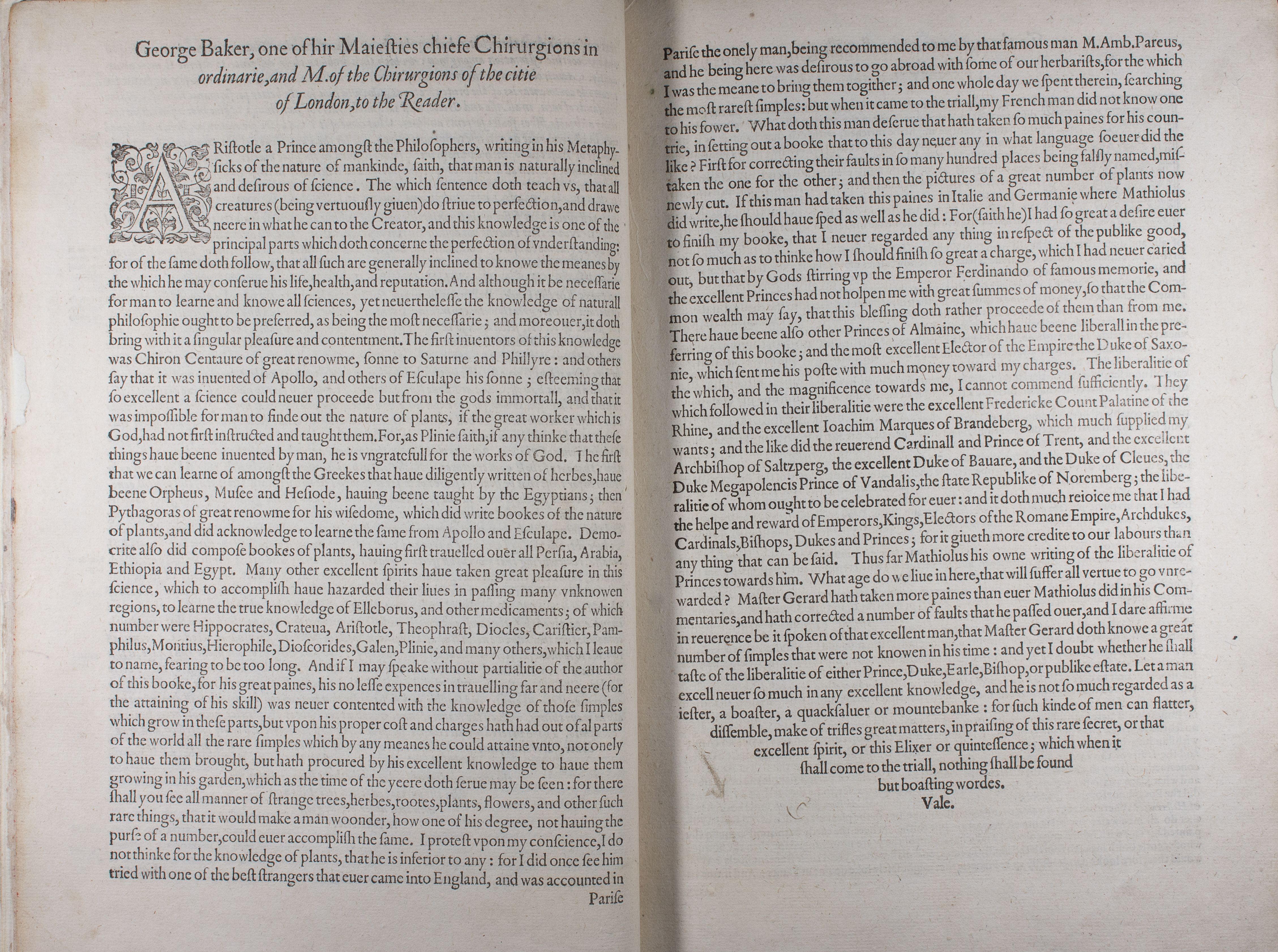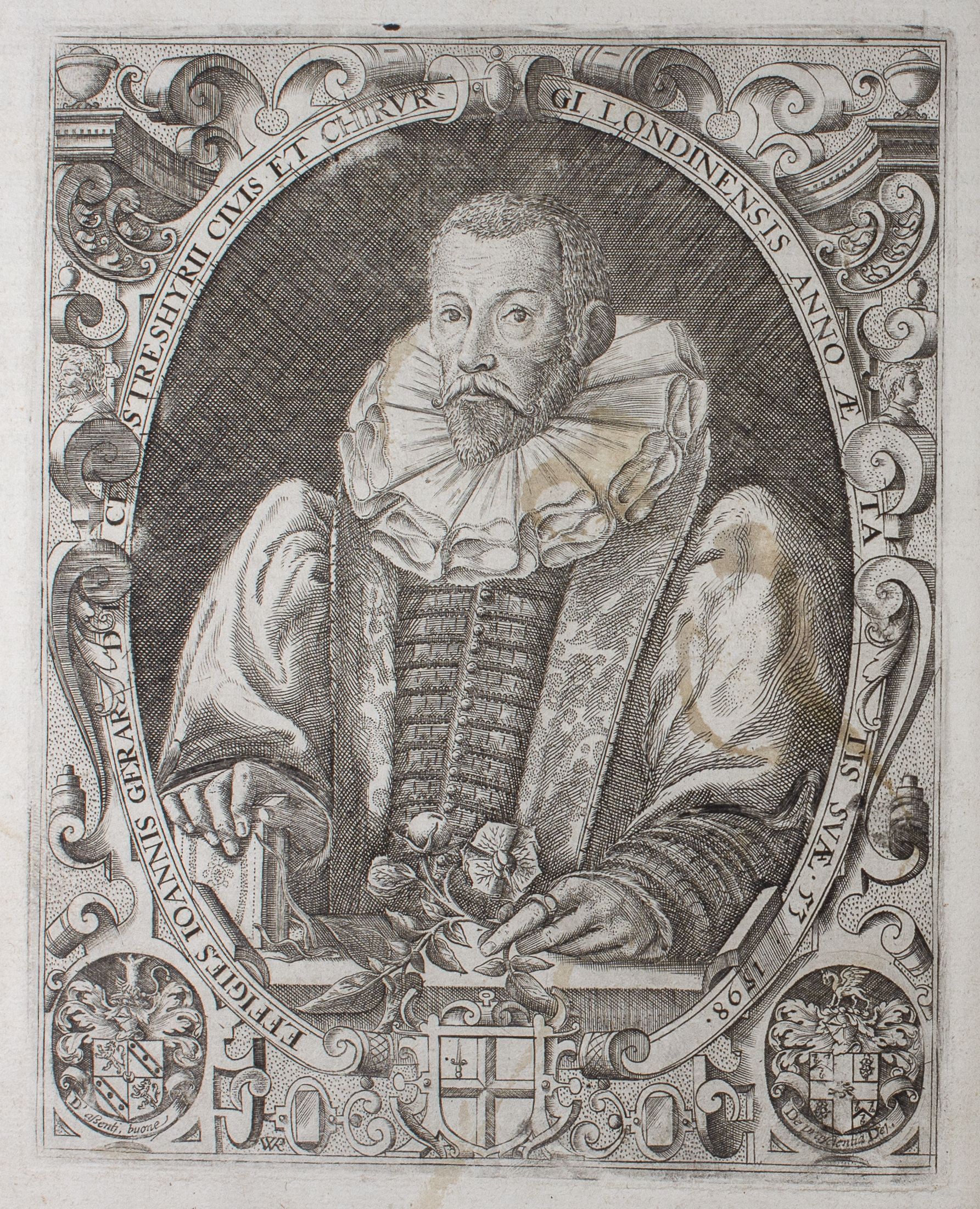Imogen King conducts a forensic examination of a 16th-century medicinal publication.
Textual materiality is a field of study which invites scholars to consider the implications of a piece of writing’s material form and condition as an influence on the reading and interpretation of the text itself. While several things are unknown about Gerarde’s Herbal, like the identities of the printers and the tome’s patron, there is a lot of information that can be deduced simply from considering the material and paratextual elements of the book. Bound in leather and dedicated to one man in particular (addressed only as ‘Your Lordship’), we can assume that a wealthy nobleman sponsored the text’s production, and evidently he possessed a keen interest in or perhaps a consistent need for pharmaceuticals.

The paratext, meaning everything that is not information on medicinal herbs, provides us with an interesting insight into the various other people involved in the printing of the text and their purposes for being so. Gerarde’s Herbal is an obvious product of Renaissance Humanism, as many various medical practitioners have written epigraphs (some in Latin), called ‘letters,’ dedicated to Gerard and his work. The final letter is from ‘George Baker, one of hir Maiesties chiefe Chirurgions [surgeons] in ordinarie, and M. of the Chirurgions of the citie of London.’ It praises Gerard as a great (if not the greatest) physician, by stating that he ‘hath taken more paines than euer Mathiolus did in his Commentaries, and hath corrected a number of faults that he passed over.’ Including epigrammatical letters of this sort serves two main purposes that indicate a mutually beneficial arrangement for Gerard and Baker. Gerard’s merits as a man of medicine are validated and ratified by Baker’s comments. Equally, Baker and the other ‘Chirurgions’ who wrote ‘letters’ for the book are able to advertise their expertise in the most advantageous place: a book for people seeking medical help.
The Herbal, therefore, provides some wonderful insight into the world of medicine in Elizabethan England, not only from the pharmaceutical side, but also from the perspective of the surgeons and a view of Renaissance advertising.
